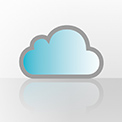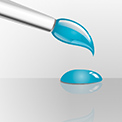Usage of transparencies in a publishing workflow
1. Preface
Transparencies cannot be used in a traditional PostScript workflow due to PostScript limitations. However it is possible to use transparencies in a layout application like Adobe InDesign or QuarkXPress since they perform transparency flattening before a job is printed to a PostScript device.
The drawback here is that it is not possible to use OPI anymore because the original images are no longer available in the areas affected by transparency after the flattening.
HELIOS offers a solution for this, called PDF-native OPI, where a PDF workflow instead of a traditional PostScript workflow is used (PDF HandShake manual chapter
12 PDF-native OPI workflow).
This document gives some more background information about transparency usage and the possible output options.
2. Transparency Types
There are different types of transparencies: document transparencies and image transparencies.
2.1 Document transparency
Document transparency is a result of effects applied in a layout application, e.g. drop shadows or object opacity less than 100%. This is fully supported in a PDF-native OPI workflow.
2.2 Image transparency
Image transparency is used when an image is saved as “layered image”, i.e. without background. Such images cannot be used in an OPI based workflow because they will always be flattened.
Therefore HELIOS ImageServer UB / UB+ does currently not preserve image transparencies when a layout image is created. Nevertheless, ImageServer UB+ optionally allows preserving transparencies for image conversion for several image formats that support transparency.
If images that contain transparencies are used it is possible to use macademy's
OPI Manager for InDesign to swap low-resolution images to high-resolution images.
3. Workflow options
3.1 Using non-transparent images with document transparencies
This is fully supported by a PDF-native OPI workflow if a PDF version 1.4 or newer is exported. For a PDF/X workflow such PDFs must be flattened prior to the final output (see
4.2 PDF flattening using HELIOS Tool Server below).
3.2 Using image transparencies
When transparent images are used in PostScript and PDF-native OPI workflows the high-resolution images should be placed instead of a low-resolution layout images. Then these images will be included by the layout application during flattening, while the transparency is preserved.
The drawback is that there is no longer any server based color management, and other benefits of OPI (downsampling, output compression, remote and local low-resolution workflows, etc.) are not available.
3.3 OPI with transparent PDFs
Placing low-resolution layout images of transparent PDFs is fully supported by HELIOS ImageServer UB+ and PDF HandShake UB+. The PostScript output contains additional transparency information that is usable on PDF capable RIPs (HELIOS PrintPreview or Acrobat Distiller 8 via Create PDF Server).
4. Output options
4.1 PostScript output in a PDF-native OPI workflow
PDF-native OPI workflows allow output of PDFs with transparencies to a PDF capable RIP (HELIOS PrintPreview or Acrobat Distiller 8 ) via the “pdfprint” command, a hot folder, etc. All transparency features are preserved in full quality here.
4.2 PDF flattening using HELIOS Tool Server
For customers using a PDF/X workflow (where PDF version 1.3 is used) PDF HandShake UB+ offers an option to flatten PDFs. After flattening, these PDFs are ready for PDF/X output.
4.3 Proofing via HELIOS PrintPreview
HELIOS PrintPreview UB+ has a new feature to write either a “transparency mask layer” or a “transparency mask channel” to the proof output. Both allow a quick check whether there are any transparent areas in the output. PrintPreview UB+ does fully support transparency output for an optimal proof of the final output.
4.4 Remote proofing via HELIOS WebShare UB+
HELIOS supports previews of transparent PDF files. So this feature allows the remote proofing of jobs that are converted to PDF.
5. Notes about layout applications
5.1 Adobe InDesign
|
InDesign CS2
|
Does not write proper OPI comments in a PDF-native OPI workflow for every placed EPS layout image depending e.g. on the image color space. Therefore TIFF layout images should be used (Tech Info #103).
|
|
InDesign CS3 & CS4
|
InDesign CS3 writes OPI comments for placed TIFF and EPS layout images. So either of them can be used. When CMYK images with a spot color are used EPS low-resolution layout images are recommended because InDesign CS3 does not write OPI comments for TIFF images containing additional spot channels.
|
5.2 QuarkXPress
|
XPress 6.5
(and older versions)
|
Does not support transparencies.
|
|
XPress 7.2
|
Writes OPI comments in a PDF-native OPI workflow. Still it is only usable for non-transparent documents since it always performs flattening, even if an export format that is capable of transparencies (e.g. PDF 1.4) is used. So the final output contains an Xpress generated bitmap of the low-resolution layout image for the flattened area(s), and also the OPI-included image.
|
|
XPress 8.1
|
Preserves transparent objects designed within the XPress document and generates a true transparent PDF document. The PDF document is fully compatible with the HELIOS PDF-native OPI image replacement workflow.
|

 Enterprise Server
Enterprise Server
 Developers / SDK
Developers / SDK
 Retail / Industrial
Retail / Industrial
 Newspapers / Publishers
Newspapers / Publishers
 Photographer / Studios
Photographer / Studios
 Ad Agencies / Premedia / Printers
Ad Agencies / Premedia / Printers
 Video & Entertainment
Video & Entertainment
 Cloud Collaboration
Cloud Collaboration
 HD Color
HD Color
 Image Processing
Image Processing
 Proofing
Proofing
 WebShare Connectivity
WebShare Connectivity
 Workflow Automation
Workflow Automation
 File Server
File Server
 Press Releases
Press Releases  Videos
Videos  Newsletters
Newsletters  Events
Events